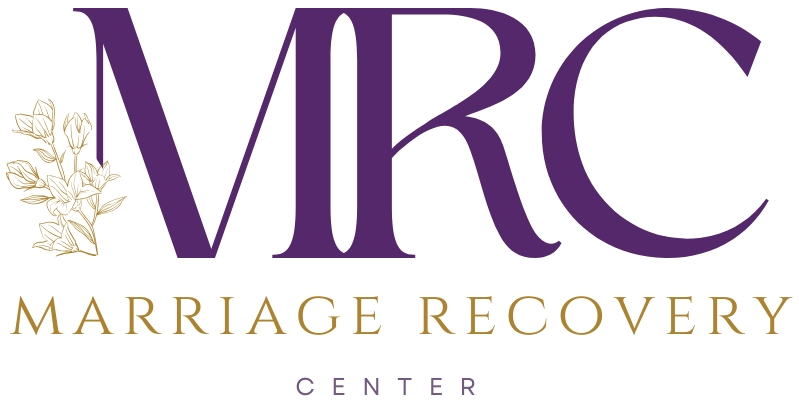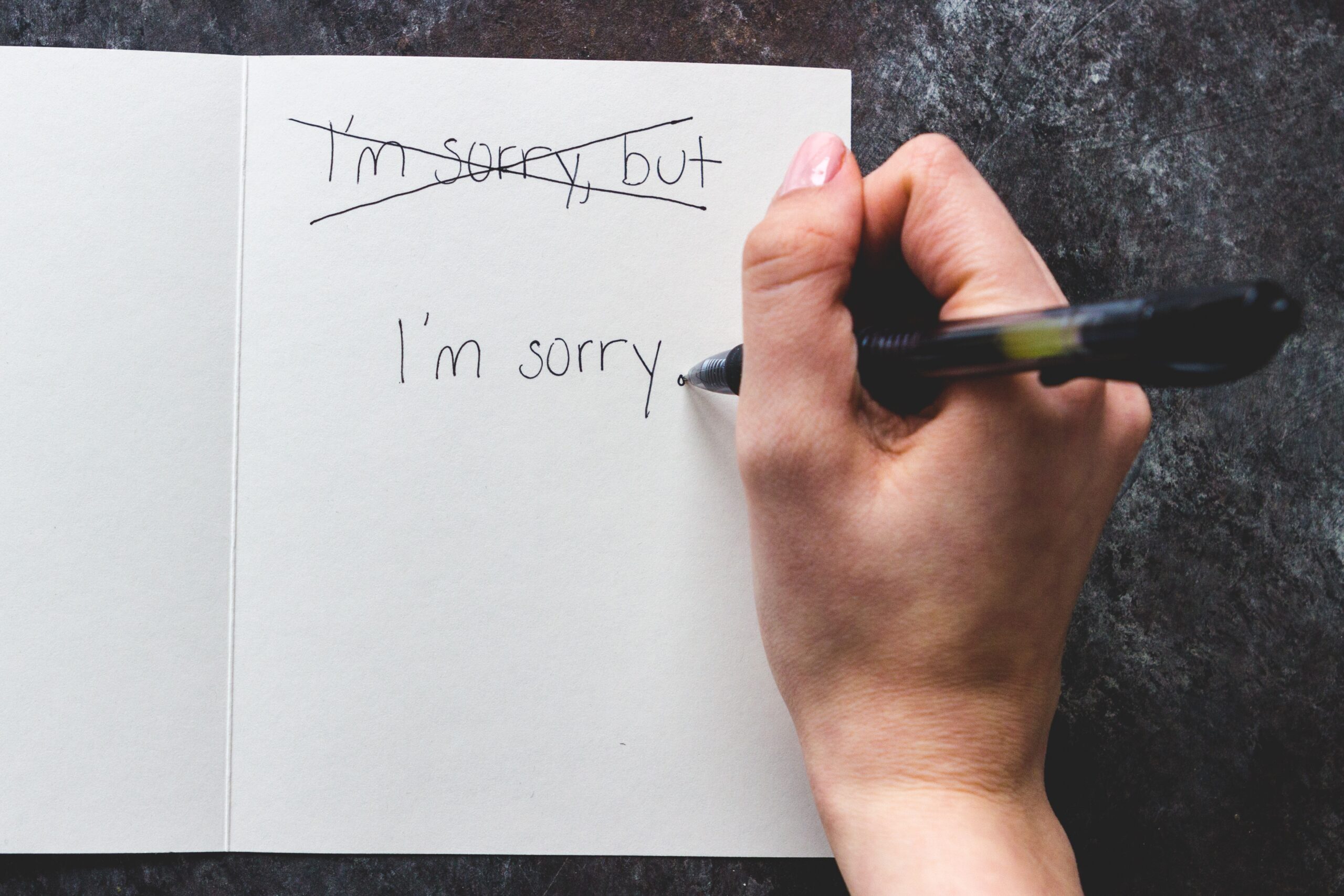There’s a good way to apology and a bad way to apologize. Find out what is the difference between a good and a bad apology in our latest video.
What is the Difference Between a Good and a Bad Apology
We’ve all been there—faced with the need to apologize for our actions. Apologies are a fundamental part of human interaction, and they can either heal wounds and strengthen relationships or exacerbate conflicts and drive people further apart. It’s essential to understand the difference between a good and a bad apology to navigate these situations effectively.
Apologizing is not always easy. It requires humility, self-awareness, and a willingness to take responsibility for one’s actions. In this article, we will explore the five signs of a good apology, as outlined in a transcript featuring Dr. David Hawkins, Director of the Marriage Recovery Center. We will also examine the characteristics of a bad apology and why they fall short of mending relationships.
Five Signs of a Good Apology
- Ownership: “I Did It”
A good apology starts with a clear acknowledgment of the wrongdoing. The offender must take ownership of their actions without equivocation or deflection. Saying, “I did it,” means admitting the behavior and naming it. This step is essential because it sets the foundation for a sincere apology. It demonstrates that the person understands what they did wrong.
- Recognition of Wrongdoing: “I’m Wrong”
Merely admitting to the behavior is not enough. A good apology involves recognizing that what was done was wrong. It’s an admission that the action crossed a boundary, violated trust, or caused harm. By saying, “I’m wrong,” the person is taking moral responsibility for their actions. This step requires self-awareness and an understanding of the impact of their behavior on others.
- Genuine Regret: “I Am Sorry”
Apologizing with sincerity means expressing genuine regret. The words “I am sorry” should be spoken with empathy and an understanding of the hurt caused. It’s not just a formality but a heartfelt expression of remorse. Dr. Hawkins emphasizes the importance of the tone of voice when saying, “I am sorry,” as it reflects the depth of one’s regret.
- Understanding Impact: “I Can See the Impact on You”
A meaningful apology goes beyond recognizing that one did something wrong; it involves understanding how those actions affected the other person. It’s about empathizing with their pain, acknowledging the emotional toll, and showing a willingness to comprehend the consequences of one’s behavior. This step demonstrates a genuine concern for the well-being of the offended party.
- Commitment to Change: “Here Is What I’m Going to Do to Change”
The final step in a good apology is a commitment to change. Apologizing is not just about saying sorry; it’s about making amends and preventing a recurrence of the same behavior. This step requires an actionable plan to address character flaws, improve behavior, and rebuild trust. It signifies a genuine desire to repair the relationship.
The Anatomy of a Bad Apology
Now that we’ve explored the elements of a good apology, let’s examine what constitutes a bad apology. Understanding the contrast can help us avoid making insincere or ineffective apologies.
- Equivocation: “I’m Sorry If…”
A bad apology often begins with equivocal language, such as “I’m sorry if I hurt your feelings.” This type of apology shifts the blame onto the offended party by implying that they may be overly sensitive or misinterpreting the situation. It fails to take full responsibility for the actions.
- Deflection: “You Did It Too”
A common characteristic of a bad apology is deflecting blame by pointing fingers at the other person. Phrases like “You did it too” or “You made me do it” shift the focus away from the wrongdoer’s actions and undermine the sincerity of the apology. It perpetuates a cycle of blame and defensiveness.
- Lack of Specificity: Vague Apologies
A vague apology lacks clarity and specificity. When someone says, “I’m sorry for whatever I did,” or “I apologize for my behavior,” without naming the specific actions or acknowledging their impact, it leaves the offended party feeling unheard and dismissed.
- Conditional Apology: “I’m Sorry, But…”
A conditional apology includes the word “but,” which negates everything said before it. For instance, saying, “I’m sorry, but you also did something wrong” places conditions on the apology and implies that it’s only valid if the other person admits fault as well. This diminishes the sincerity of the apology.
- Lack of Commitment to Change: No Action Plan
Perhaps the most significant difference between a good and a bad apology is the absence of a commitment to change. A bad apology often ends without any indication of how the wrongdoer plans to rectify their behavior or prevent future harm. Without this commitment, the apology remains hollow and ineffective.
Conclusion
In every human interaction, conflicts and misunderstandings are inevitable. What sets us apart is our ability to take responsibility for our actions and offer genuine apologies when we’ve done wrong. A good apology is an essential tool for repairing relationships, rebuilding trust, and fostering personal growth.
Remember the five signs of a good apology: ownership, recognition of wrongdoing, genuine regret, understanding of impact, and commitment to change. Conversely, be wary of bad apologies that involve equivocation, deflection, lack of specificity, conditional language, and a lack of commitment to change.
By mastering the art of a good apology and avoiding the pitfalls of a bad one, we can navigate conflicts and strengthen our connections with others. Apologies aren’t just words; they are the building blocks of trust, empathy, and reconciliation in our relationships.
To learn how we can help, reach out to us at (206) 219-0145 or info@marriagerecoverycenter.com to speak with a Client Care Specialist
Also read: Signs that Your Partner is not Changing Behavior
About Dr. Hawkins:
The internet is inundated with hyperbole and misinformation about narcissism, leaving many people confused and hopeless. Get the facts on narcissism and emotional abuse from someone who has been researching, writing about and treating narcissism and emotional abuse for over a decade.
Dr. Hawkins is a best-selling author and clinical psychologist with over three decades of experience helping people break unhealthy patterns and build healthier relationships.
He is the founder and director of the Marriage Recovery Center and the Emotional Abuse Institute which offers education, training and counseling for people who want to break free of, and heal from, emotional abuse. Whether the perpetrator of the abuse is your spouse, partner, parent, boss, friend or family member, we offer practical advice for anyone trapped in a toxic, destructive relationship.
In addition to narcissism & emotional abuse, you’ll learn about the lesser known forms of abuse, including covert abuse, reactive abuse, spiritual abuse, secondary abuse, relationship trauma and much more.








